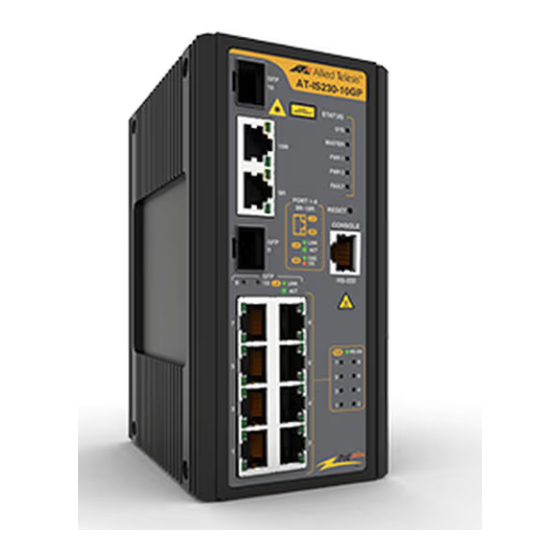
User Manuals: Allied Telesis IS Series Network Switch
Manuals and User Guides for Allied Telesis IS Series Network Switch. We have 2 Allied Telesis IS Series Network Switch manuals available for free PDF download: Installation Manual
Allied Telesis IS Series Installation Manual (108 pages)
Industrial Ethernet Layer 2 Switches
Brand: Allied Telesis
|
Category: Switch
|
Size: 4 MB
Table of Contents
Advertisement
Allied Telesis IS Series Installation Manual (94 pages)
Industrial Ethernet Layer 2 Switch
Brand: Allied Telesis
|
Category: Network Router
|
Size: 4 MB

